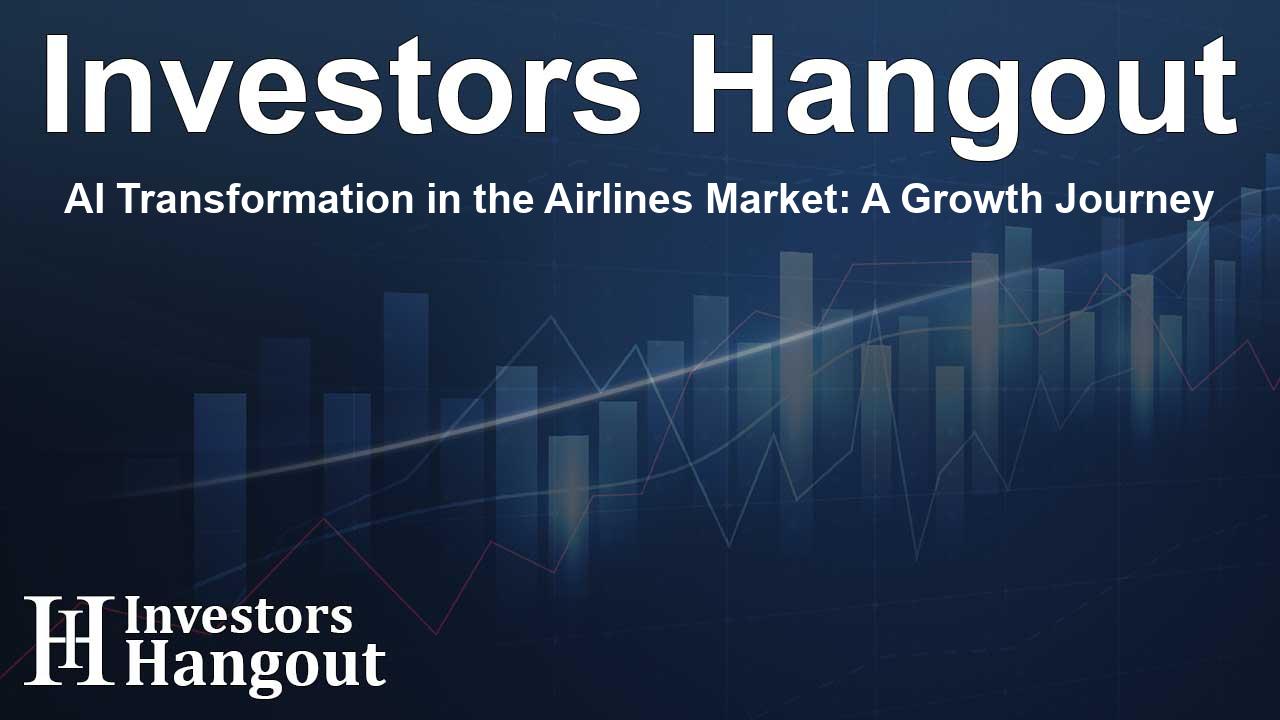AI Transformation in the Airlines Market: A Growth Journey

AI Transformation in the Airlines Market: A Growth Journey
The evolution of artificial intelligence (AI) is reshaping the commercial airlines market, expected to grow remarkably by USD 370.2 billion over the next several years. This compelling growth is driven primarily by increasing air passenger traffic and the emergence of smart airport technologies.
Market Growth Projections
Market analysts project that the commercial airlines sector will see a compound annual growth rate (CAGR) of 8.09% between 2024 and 2028. The driving force behind this impressive expansion is the rising number of global travelers leading to heightened demand for flight services. Nevertheless, airlines face challenges such as increasing operational expenses, intensified competition, and the need for sustainable practices.
Enhancing Passenger Experience with Smart Airports
Smart airports have emerged as a key trend in the aviation landscape, leveraging technology to create smoother travel experiences. Powered by a centralized digital platform, these modern facilities improve communication among airport staff, airlines, and passengers, enabling real-time updates and streamlined operations. The implementation of these systems is a response to the growing need for efficiency and the rising expectations of travelers.
Leading Companies in the Industry
Major players in the commercial airline arena include industry giants like Air China Ltd., Delta Air Lines Inc., and American Airlines Group Inc., all of whom are actively integrating AI-driven solutions into their operations. This strategic pivot not only enhances customer service but also positions these airlines competitively in a rapidly evolving market.
Fuel Efficiency and Sustainability
As the industry focuses on sustainable aviation, modern fleets are transitioning from older aircraft to newer, fuel-efficient models, such as narrow-body jets. These advancements in technology and design are critical as global entities push for reduced carbon footprints and compliance with stringent environmental regulations. With fuel prices fluctuating due to geopolitics and economic factors, adopting efficient aircraft has become a paramount strategy for airlines aiming to optimize costs while enhancing operational effectiveness.
Emerging Challenges in the Market
The commercial airlines market is not without its challenges. Escalating operational costs, including rising fuel prices and increasing labor expenses, threaten profit margins. Operational decisions have become more complex with the proliferation of low-cost carriers (LCCs) and the investments required to remain competitive in a digital-first ecosystem. Airlines are facing pressure to innovate while managing these expenses effectively.
Technological Innovations Driving Change
Technological innovations continue to play a crucial role in transforming the commercial aviation sector. For example, machine learning and AI are being harnessed to improve safety protocols and enhance maintenance processes. Moreover, advancements in cargo operations are increasing efficiency in freight transportation, allowing airlines to diversify revenue streams amid fluctuating passenger demand.
Market Segmentation Overview
The commercial airlines market can be segmented by revenue streams, which include passenger and cargo services. Additionally, the division is made between international and domestic operations, reflecting the varying dynamics of different markets worldwide. This segmentation allows airlines to tailor their services and marketing efforts to engage specific customer bases effectively.
Conclusion: Future Outlook
The future of the commercial airlines market is undeniably intertwined with advancements in AI and technology. Airlines are increasingly prioritizing the integration of innovative systems and sustainable practices to navigate the shifting landscape. As technology continues to evolve, so too will the opportunities for airlines to enhance passenger experiences and streamline their operations, ultimately driving the market's growth trajectory.
Frequently Asked Questions
What is driving growth in the commercial airlines market?
The market is primarily driven by increasing air passenger traffic and the rise of smart airport technologies that enhance operational efficiency.
What are the challenges faced by the airlines industry?
The industry faces challenges such as rising operational costs, especially in fuel prices and labor, alongside stiff competition from low-cost carriers.
How are AI technologies impacting the airlines sector?
AI technologies enhance safety protocols, streamline maintenance, and improve customer service, thereby reshaping the operational landscape of airlines.
Which companies are leading the commercial airlines market?
Major companies include Air China Ltd., Delta Air Lines Inc., and American Airlines Group Inc., all integrating AI innovations to improve service delivery.
How is the market segmented?
The market is segmented by revenue streams (passenger and cargo) and also by international and domestic operations to cater to different consumer needs.
About Investors Hangout
Investors Hangout is a leading online stock forum for financial discussion and learning, offering a wide range of free tools and resources. It draws in traders of all levels, who exchange market knowledge, investigate trading tactics, and keep an eye on industry developments in real time. Featuring financial articles, stock message boards, quotes, charts, company profiles, and live news updates. Through cooperative learning and a wealth of informational resources, it helps users from novices creating their first portfolios to experts honing their techniques. Join Investors Hangout today: https://investorshangout.com/
Disclaimer: The content of this article is solely for general informational purposes only; it does not represent legal, financial, or investment advice. Investors Hangout does not offer financial advice; the author is not a licensed financial advisor. Consult a qualified advisor before making any financial or investment decisions based on this article. The author's interpretation of publicly available data shapes the opinions presented here; as a result, they should not be taken as advice to purchase, sell, or hold any securities mentioned or any other investments. The author does not guarantee the accuracy, completeness, or timeliness of any material, providing it "as is." Information and market conditions may change; past performance is not indicative of future outcomes. If any of the material offered here is inaccurate, please contact us for corrections.